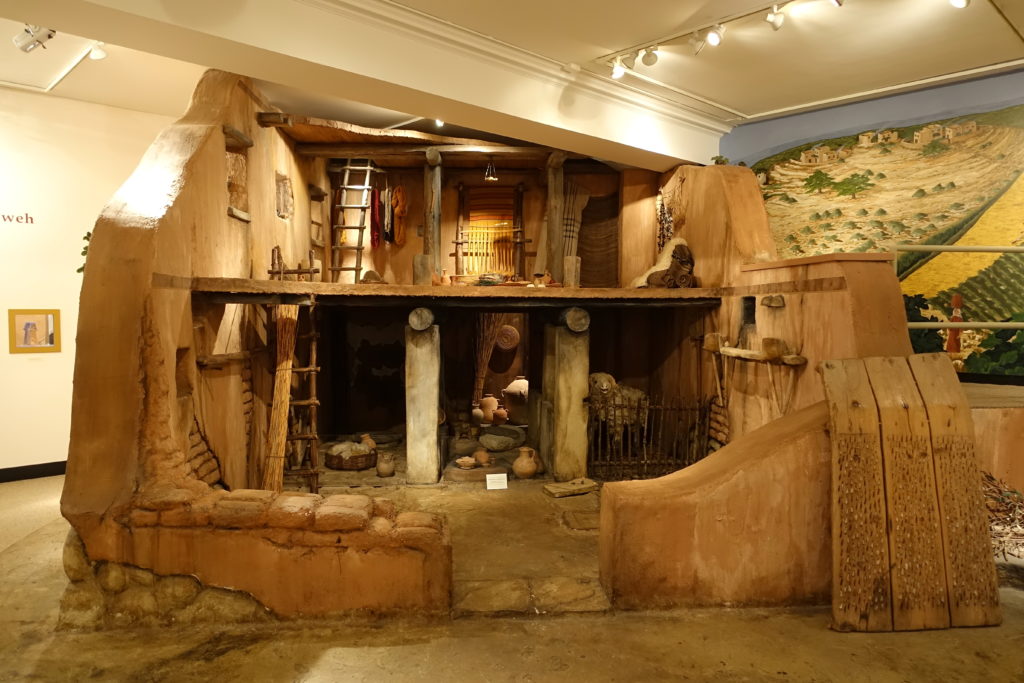Jesus Was Probably Born in a Relative’s House, Not an Inn
Christ’s nativity is popularly imagined in a stable behind an inn, perhaps surrounded by sheep and cows. But a careful reading of the account within its historical context, supported by other textual and archaeological evidence, paints a different picture. The Christ child was not born in a stable alone with the animals but in a small house crowded with people—the kinds of people he came to save.
Inns and Other Lodgings
Inns certainly existed when Jesus was born. The Romans built extensive road systems linking the empire, and inns were part of the highway infrastructure. But Roman-era inns were typically found along highways between major cities where travelers needed refreshment stops. Once travelers reached a city like Bethlehem, they typically sought local hospitality—as illustrated by the later journeys of Paul. When rented space was needed in a city, an “upper room” above a house or business could be hired—as Jesus did in Jerusalem for the Last Supper (Luke 22:12). But it is not likely that travelers, especially a poor couple like Mary and Joseph, would look for an inn upon arrival at Bethlehem. They would have lodged with relatives.
After all, Mary and Joseph were traveling to Bethlehem during a census, “because [Joseph] was of the house and lineage of David” (Luke 2:4). That means Joseph had relatives in Bethlehem. It was his family’s native town. It is unthinkable that Mary and Joseph would have sought lodging in an inn rather than staying with family.
Though English translations of Luke’s birth narrative do mention an “inn” (Luke 2:7), that translation is rooted in tradition rather than lexicography. The Greek term used is not the word for an inn.
The Lodging Space of Jesus’s Birth
When Jesus was born, Luke reports that Mary “wrapped him in swaddling cloths and laid him in a manger, because there was no place for them in the kataluma” (Luke 2:7). Most English Bibles translate kataluma as “inn,” but that is not the word’s usual meaning.
The normal Greek term for an “inn” is the word pandocheion. Luke mentions a pandocheion later in his Gospel, in the parable of the Good Samaritan (Luke 10:25–37). In that story, a Samaritan traveler discovers a wounded Jewish man lying by the highway. So the Samaritan “set him on his own animal and brought him to an inn (pandocheion)” to care for him there (Luke 10:34).
The inn’s presence in the parable of the Good Samaritan shows that Luke knew the Greek term for an inn (pandocheion). He also recognized the inn’s typical location along highways between cities.But Luke does not use that term in his story of Jesus’s birth in Bethlehem. Instead, Luke uses the term kataluma which refers to the “lodging space” inside a typical house.
The Hebrew Pillared House
The usual design for a home in ancient Palestine is known as a “pillared house” or a “four room house.” Though some variation is certainly possible, the general pattern is fairly consistent among period houses.
The main floor typically had four rooms divided around the house’s pillars. To visualize the layout, picture a capital letter “E” as the shape of the house viewed from above. Each of the four straight lines of the “E” represents a room. Three rooms are parallel, running from the front of the house toward the back. The two stripes between them (the white spaces in the “E”) are where pillars stood to support the upper part of the house, thereby dividing the lower floor into three rooms. A fourth room ran perpendicular to the others along the back of the house. That room was typically used for storage, while the other three rooms facilitated daily chores.

For two-level houses, a ladder led up to the main lodging space, which was located above. That upper room was where the family ate and slept. It was called the “lodging space,” or kataluma in Greek.
When Mary and Joseph went to Bethlehem, they almost certainly sought lodging with local relatives. But the house where they were received was already so full that there was no room for them in the “lodging space” (kataluma) of the house. Therefore they, and perhaps other relatives, were compelled to stay in the function rooms downstairs.
The Location of the Manger
Family chore implements were likely located in one of the side rooms downstairs. The center room was like a hallway to the storage in back. And the third downstairs room was where the household goats and sheep were penned.
Most Hebrew households did not have the luxury of a special structure just for animals. Professional shepherds might use community sheep pens outside the city, but most households inside the city would keep just a few sheep or goats for wool and milk. These were penned in one of the downstairs rooms. Low, partial walls generally separated the three function rooms downstairs, and a feeding trough for the animals was set into the top of the low barrier between the center room and the animal pen.
In the house where Mary and Joseph lodged that night, the lodging space (kataluma) upstairs was full. That compelled them, and perhaps others, to stay downstairs overnight. And with no space to lay the baby born in such conditions, the new mother placed the child in the manger in the low wall beside her.
The Presence of Others in the House
Further support for this reading emerges later in Luke’s narrative. According to Luke, angels reported news of the birth to shepherds in the surrounding fields. The angels told them that a baby born in Bethlehem that night was “the Savior, who is Christ the Lord” (Luke 2:11). So the shepherds hastened into the city to find the child, “and when they saw it, they made known the saying that had been told them concerning this child. And all who heard it wondered at what the shepherds told them” (Luke 2:17–18).
The phrase “all who heard it” suggests there were a lot more people than just Mary and Joseph in the house that night. According to Luke, the shepherds’ report began the moment they saw the child. And Luke nowhere suggests that the shepherds left the nativity to knock on doors and wake others to tell them also. The “all” Luke mentions seems to indicate other lodgers in the same house with Mary and Joseph when the shepherds arrived. It was a crowded house, not a lonely stable.
Reimagining the Nativity
Later readers misunderstood Luke’s narrative because of their unfamiliarity with the period practice of lodging animals and installing a manger inside the family house. Furthermore, mention of a “manger” in the account prompted assumptions that the event occurred in a stable. But textual and archaeological evidence helps us to better envision the setting for Jesus’s birth as a house crowded with aunts, uncles, cousins, and other distant relatives from Joseph’s family in the lineage of David.
Re-envisioning the nativity’s setting may not change the significance or meaning of the event, but it does help readers to imagine the scene differently. This perspective highlights the poor, oppressed, weary travelers crowded around the baby that night. After the isolation of Christmas last year due to the pandemic lockdown, this is a good year to refresh our vision of the family gathering that gave context to the original nativity scene.
To see a model pillared house, view the video prepared by the author for his congregation, below:
Subscribe now to receive periodic updates from the CHT.
Image created by Rubner Durais





